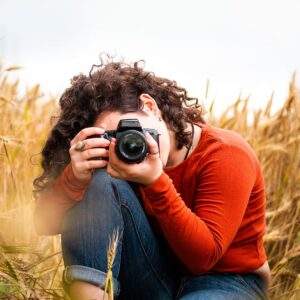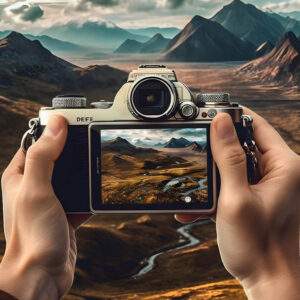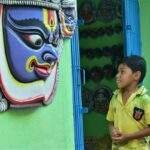Photography isn’t only about capturing moments. It is a skill, and not everyone has the creativity & talent to capture great moments. But if you want to walk the path of creativity and tell stories through this proficiency, now is the right time to consider a course from photography institute in Kolkata.
How Kolkata Has Evolved in Photography?
Kolkata has become a land for street photographers. Beyond streets, there are moments where everyone needs a photographer to make their moments turn into beautiful memories. That being said, wedding photography is only a big example of a flourishing career for budding enthusiasts. Other forms of photography that you may enhance your skills in are portraits, landscapes, and more. If you are serious about grabbing this career opportunity, you need to understand AI too.
For decades until now, photography students in Kolkata have learned by handling cameras and working in darkrooms. They have mastered the art & practised manual editing techniques. Cut to the modern era, and you see AI taking a huge turn. The entire concept of photography has been shifting to a new direction as technology is reshaping.
Across the city, people enrolling in photography courses in Kolkata experience a new way of learning. AI-driven tools are added to lessons. This changes the way aspiring photographers practice and edit their craft. Let’s understand more about how AI is changing the world of photography in this post.
The Current State of Photography Education in Kolkata
Kolkata has long been a cultural hub where arts and education thrive. Photography institutes in the city have played a vital role in nurturing talent. Traditional teaching methods have focused on:
- Camera handling techniques
- Lighting and shadow exercises
- Framing and composition lessons
- Editing through software like Photoshop and Lightroom
- Practical assignments and exhibitions
These foundations remain important, but the photography industry is demanding new skills. Clients expect faster delivery, polished results, and visuals that connect with digital-first audiences. For students, this raises a challenge: how to balance traditional craft with modern tools that employers and clients value.
The Entry of AI in Photography Classrooms
Photography teachers in Kolkata have begun integrating digital assistants and automation into their lessons. These tools support students with editing, image correction, and even creative experimentation. The approach is simple: let students focus on creativity while technology helps with repetitive and time-consuming tasks. Some common uses include:
| Cleaning the background or removing the objects | For commercial shoots |
| Automated colour correction | For large batches of images |
| Styling filters | To test multiple looks in minutes |
This saves hours of manual work for a student. It means more time for creative exploration & practical assignments.
How Photography Institutes Are Adapting?
Photography schools in Kolkata have long built their reputation on strong fundamentals. Students are trained in handling cameras, studying light, and developing an eye for detail. These foundations remain just as important today, but institutes are recognising that the industry has changed.
Blending Tradition with Modern Demands
Photography schools in Kolkata have always focused on the basics: handling a camera, studying natural light, and learning the art of composition. These skills remain important, but today’s industry asks for more. Brands & agencies want faster results and polished visuals for digital platforms. To keep up, institutes offering photography courses in Kolkata are reshaping their teaching approach.
Practical Classroom Changes
The new method does not replace classical techniques but adds to them. For example, after a class on natural light, students may be asked to edit the same photograph using modern editing software. They can notice how small adjustments in exposure or colour can completely change the mood of an image.
Assignments are also evolving. Instead of submitting only manually edited work, students prepare two versions: one refined by hand and another polished with digital tools. Comparing both versions helps them understand the strengths and limits of each method.
Group Projects and Teamwork
Collaboration has become another focus area. Many institutes now ask students to create mood boards for campaigns before moving into the real shoots. They offer students a chance to test creative ideas at affordable prices. You can then move into physical shooting once the concepts are finalised.
How Do Students Get the Benefits?
A few clear benefits for students include the following-
They Can Learn Faster
What once took hours can now be done in minutes. The recent-day photography lets students try more variations while learning faster through experimentation.
Achieving Photography Education at Affordable Prices
Premium quality editing was once possible only with expensive software or by hiring professionals. But technology is affordable today. It makes it possible for students to access the same results with a few resources.
Become Industry Ready
Employers want photographers who can deliver quick results without compromising quality. If you are trained in both traditional as well as modern tools, you can get a competitive edge.
Improve Creativity
AI-driven software allows students to try out surreal edits, test campaign ideas, or create visuals that would be impossible with limited budgets. This widens their imagination and prepares them for advertising, branding, and content-driven industries.
Additional Things that You Need to Know about Photography Education
Even with these advantages, there are challenges that students and institutes face in Kolkata.
Extremely Expensive Software
Some advanced tools are expensive, which can discourage smaller institutes or independent learners.
Skill Gap Among Photography Faculty
Senior educators may find it difficult to adapt to new tools, slowing adoption.
Fear & Risks of Losing Originality
Students worry that heavy reliance on automation may affect their personal style.
Copyright Issues
Questions around ownership of generated visuals create uncertainty.
These need careful attention so that technology supports education rather than creating new barriers.
Top Ethical Concerns in Classrooms that Photography Faculty Follows
Education cannot ignore the moral side of new tools. Photography teachers in Kolkata are more concerned about responsibly implementing technology. Key discussions in classrooms include the following-
To Protect the Originality of the Talent
One of the main discussions in Kolkata’s photography classrooms is about originality. Teachers remind students that technology should support creativity, not replace it. The aim is to develop a personal style that reflects individual thought, while using digital tools only as assistants in the process.
Being Completely Transparent
Another important aspect is honesty. Students are encouraged to be clear with clients when automated edits or filters are used. This builds trust and avoids misunderstandings, especially in commercial work where authenticity can impact brand image.
Respecting Copyright Issues
Respect for copyright is also a strong focus. Photography courses stress the importance of using legal resources and avoiding unauthorised material. By learning this early, students protect themselves from future disputes and learn to value intellectual property.
Using Tools alongside Creative Minds
Teachers guide students to use modern tools with balance. Overreliance on shortcuts can weaken core skills like composition and manual editing. By finding the right balance, students grow into professionals who are creative, skilled, and reliable.
In short, this ethical grounding ensures that graduates from photography courses in Kolkata enter the industry with both artistic confidence and professional integrity.
Best Practices for Institutes in Kolkata
To make the most of this change, photography schools in Kolkata are adopting new practices:
Start Small
Instead of reworking entire courses, schools add small modules introducing students to automation and editing tools.
Faculty Training
Teachers attend workshops so they can guide students confidently.
Blend Old & New
Students practise both manual retouching and automated editing to see the difference.
Encourage Projects
Assignments push students to use technology creatively while still applying traditional techniques.
Industry Tie-Ups
Partnerships with studios & creative agencies expose students to real-world expectations.
The Future of Photography Education in Kolkata
Looking ahead, the role of technology in classrooms will only expand. Institutes in Kolkata are already discussing:
- Courses that teach prompt writing alongside traditional editing
- Partnerships with software companies for student licences
- Collaborative projects where students mix real photography with digital experiments
- Online platforms allowing allow live feedback from mentors through automated systems
It means more exposure & a stronger connection with industry needs.
Why This Matters for Students?
This change is significant for anyone considering photography courses in Kolkata. You may often worry about whether a creative career can be sustainable. By combining traditional craft with modern tools, institutes are preparing students for careers in advertising, fashion, digital marketing, media production, and beyond.
Graduates will not only know how to capture beautiful images but also how to deliver them in formats and styles that today’s market values. This balance of art and practical skills is what gives students confidence and job security.
Wrap up
Welcoming technology with responsibility helps every photography institute in Kolkata. Photography education in Kolkata is moving into a new phase. Traditional methods of teaching remain valuable, but classrooms are opening up to new tools that prepare students for a modern industry. Institutes that adapt quickly will be able to offer stronger career paths to their students.
While evaluating photography courses in Kolkata, look for programmes that balance creativity, technical skills, and modern tools. This combination ensures that young photographers do not lose touch with their artistic roots while staying relevant to industry demands.











